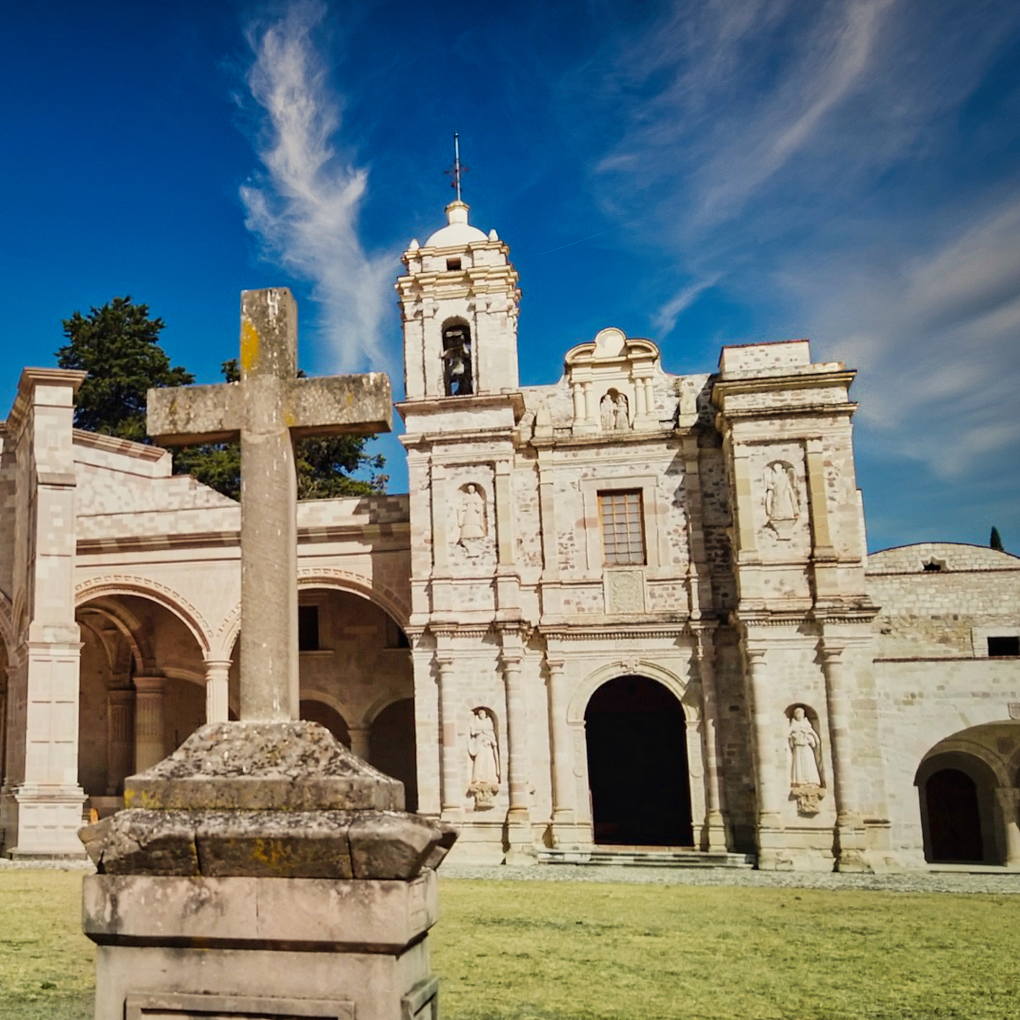
San Pedro y San Pablo Teposcolula English


Continua en la historia
 Desliza a la izquierda para continuar
Desliza a la izquierda para continuar
◈ The Mixtec town of Teposcolula is tucked under a sky filled with white clouds that, from a distance, seem to float across the roof of its immense Dominican convent. It is filled with stone columns, walls, and vaults that let the fresh air stream in through the archways.
In the afternoons, you can watch the rays of sunshine chase each other across the walls of the structure, created by the Dominicans. Other memories of colonial times appear along the cobblestone streets. But it is the warmth of its people that draws you back.

◆ Visit Casa de la Cacica to learn more about Teposcolula.
◆ Learn about colonial waterworks in El Alarcón and La Alcantarilla.
◆ Explore Pueblo Viejo mountain.

See the oil paintings and the confessional carved from a single piece of wood, and the Capilla de Santa Gertrudis with its Solomonic columns.

❖ Conoce la Casa de la Cacica
This palace dates from 1560, and once served as the residence of the last Mixtec queen of the Teposcolula lands. The building is notable in the history of the Americas for being one of the few buildings in the hemisphere that shows a clear transition between traditional indigenous building techniques and those brought by the Europeans.
The eastern patio of the structure was rescued and remodeled. You will see pointed arches and balconies with a clear Spanish influence alongside Mixtec decorative elements.
Today the palace holds a well-stocked library and cultural center containing books on history, art, science, and young adult and children’s literature. Workshops are also offered here–all this demonstrating how ancient buildings, even those from pre-Hispanic times, can take on a new life and new value.

❖ Admira el Templo y Claustro
de San Pedro y San Pablo Teposcolula
Located in this Magical Town’s downtown, you’ll spot this church and its cloister immediately because of its immense atrium and monumental structure, built with pink and white limestone in the 16th century.
Before entering the church, step into its open chapel, a spectacular construction built to help evangelize the indigenous population. Experience the space’s unique sound and light characteristics.
The interior of this church and cloister offers the best of both worlds: fresh air and natural light coming and going between the columns, walls, and limestone vaults.
Go into the church and admire its monumental organ, the confessional carved from a single piece of wood, and the spectacular Churrigueresque altarpiece. The central figure in the piece is the Señor de las Vidrieras, an image of Christ much-revered by the local people.
❖ El Alcorcón y La Alcantarilla
During the colonial period, Teposcolula had a complex water distribution system, including a network of strategically located tanks to supply the population. The remains of the network are still visible in El Alarcón–it is a stone structure that has a collection and distribution system for used water, as well as nine springs whose water runs through stone canals to the tank. La Alcantarilla is another water tank from the same time period. It was at the end of a five mile-long aqueduct that started in Yucundaa.
These structures, together with Hospital de Indios de la Santa Veracruz, the Odriozola and Arvea houses and squares, Tandaa, the old corn cribs, the Dolores archway, and the Palacio Municipal (City Hall) earned this Magical Town the title Zona de Monumentos Históricos (Historic Monument Zone) in 1986.


❖ Pueblo Viejo Mountain and the Town of San Pedro Yucunama
The Pueblo Viejo mountain retains the traces of one of the most important Mixtec chiefdoms of the Postclassical period. There is a ball court, Gran Plaza, and series of residential complexes spread across the sides and peak of the mountain.
Take this chance to visit the town’s downtown–we suggest popping into the small museum with archeological finds said to be from the Olmec people. The jewel of its collection is the ancient codex known as the Códice de Yucunama.
❖ Meander Through Teposcolula’s Downtown
Start in the Parque Municipal, surrounded by the Portal de Dolores archway and the Casa Parroquial, the perfect place to wander through the gardens and admire the Las Mascaritas monument. Don’t miss Hospital de la Santa Vera Cruz, where the indigenous population received care.
❖ Get Away to Santo Domingo Yanhuitlán
This town’s church is one of the most dazzling examples of religious architecture in Oaxaca. Climb the high staircase and step inside–you will marvel at the spacious nave and the intricately adorned altarpieces.
The main altar still has its original altarpiece made in the middle of the 16th century, and the paintings on it are attributed to the Spaniard Andrés de la Concha, one of the great figures of sacred art in the colonies. There are columns and figures of fruit covered in authentic gold leaf.
















